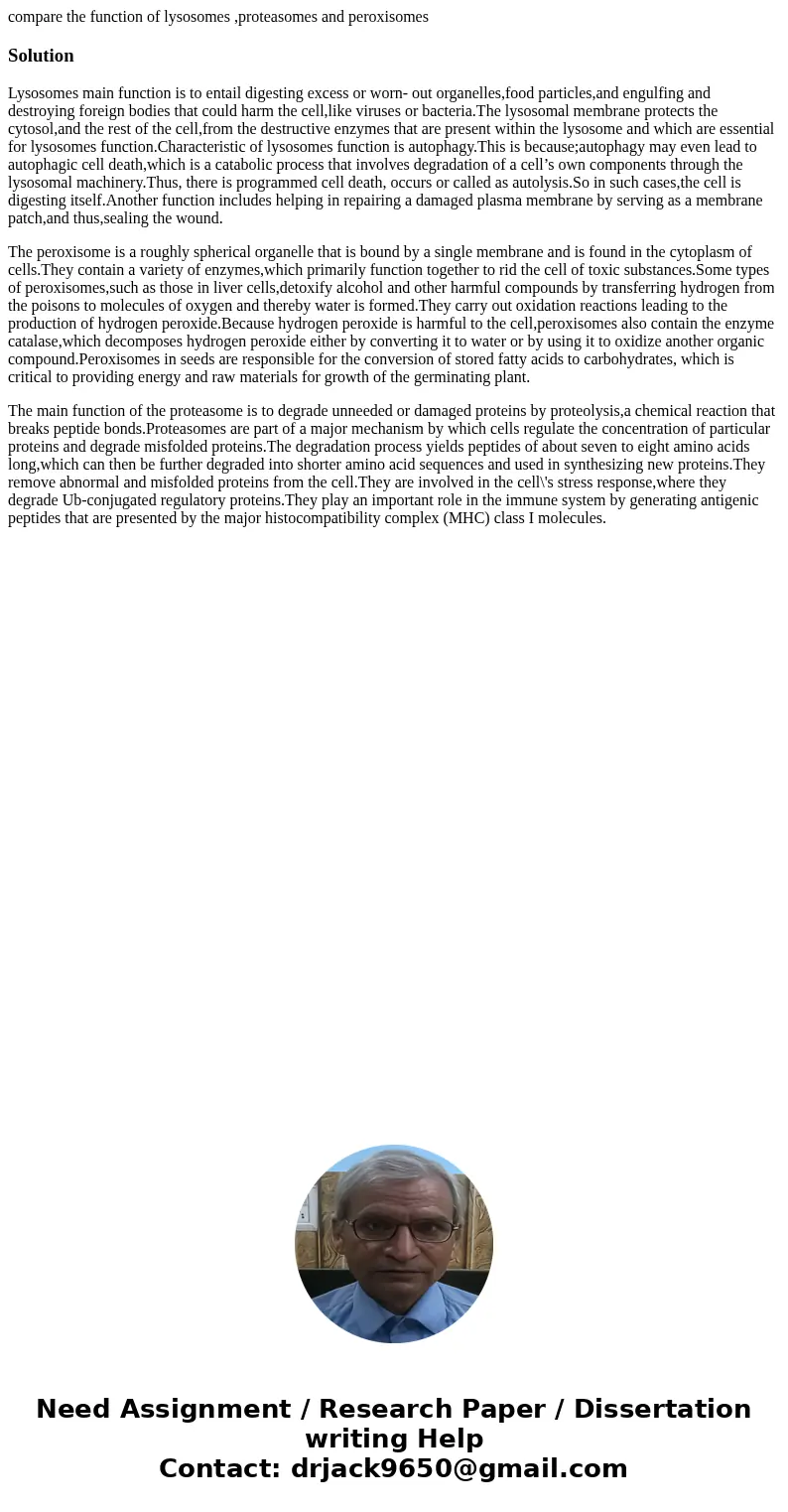compare the function of lysosomes proteasomes and peroxisome
compare the function of lysosomes ,proteasomes and peroxisomes
Solution
Lysosomes main function is to entail digesting excess or worn- out organelles,food particles,and engulfing and destroying foreign bodies that could harm the cell,like viruses or bacteria.The lysosomal membrane protects the cytosol,and the rest of the cell,from the destructive enzymes that are present within the lysosome and which are essential for lysosomes function.Characteristic of lysosomes function is autophagy.This is because;autophagy may even lead to autophagic cell death,which is a catabolic process that involves degradation of a cell’s own components through the lysosomal machinery.Thus, there is programmed cell death, occurs or called as autolysis.So in such cases,the cell is digesting itself.Another function includes helping in repairing a damaged plasma membrane by serving as a membrane patch,and thus,sealing the wound.
The peroxisome is a roughly spherical organelle that is bound by a single membrane and is found in the cytoplasm of cells.They contain a variety of enzymes,which primarily function together to rid the cell of toxic substances.Some types of peroxisomes,such as those in liver cells,detoxify alcohol and other harmful compounds by transferring hydrogen from the poisons to molecules of oxygen and thereby water is formed.They carry out oxidation reactions leading to the production of hydrogen peroxide.Because hydrogen peroxide is harmful to the cell,peroxisomes also contain the enzyme catalase,which decomposes hydrogen peroxide either by converting it to water or by using it to oxidize another organic compound.Peroxisomes in seeds are responsible for the conversion of stored fatty acids to carbohydrates, which is critical to providing energy and raw materials for growth of the germinating plant.
The main function of the proteasome is to degrade unneeded or damaged proteins by proteolysis,a chemical reaction that breaks peptide bonds.Proteasomes are part of a major mechanism by which cells regulate the concentration of particular proteins and degrade misfolded proteins.The degradation process yields peptides of about seven to eight amino acids long,which can then be further degraded into shorter amino acid sequences and used in synthesizing new proteins.They remove abnormal and misfolded proteins from the cell.They are involved in the cell\'s stress response,where they degrade Ub-conjugated regulatory proteins.They play an important role in the immune system by generating antigenic peptides that are presented by the major histocompatibility complex (MHC) class I molecules.

 Homework Sourse
Homework Sourse